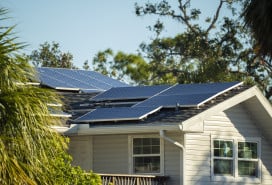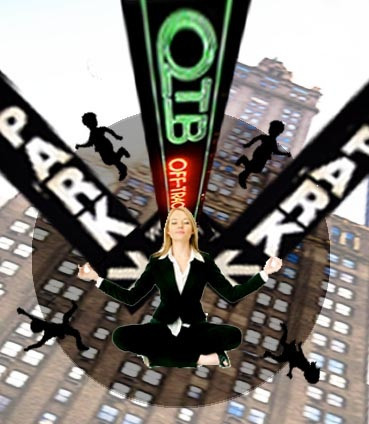Thinking of buying blackout blinds? Here's what you need to know
Blackout curtains are typically associated with sleeping the day away in a hotel room, but they can be a game-changer for your New York City apartment. Light pollution is a constant in the city, and while exposure to any light has the potential to make it harder to sleep, the city's nearly complete project of installing new LED streetlights raises the stakes. That's because the city is using LED bulbs that give off a cold, blue kind of light and, like the light from computer and smartphone screens, can disrupt people's sleep by making their bodies think that it's daytime. Scientists have even associated routine exposure and the attendant disturbances of people's bodily rhythms with increased risks of cancer, diabetes, and heart disease, though not conclusively.
People working the night shift, meanwhile, may want to keep out the natural daylight so that they can catch some shuteye. Blackout curtains, shades, and blinds can also help cut energy costs by keeping heat in an apartment when it's cold, and keeping the heat of the sun out when it's warm, and can also protect art and furniture from sun damage. A major drawback, on the other hand, is that blotting out the light can make it harder to wake up, for similar biological reasons.
Here are some basics to know about blackout options:
Curtains vs. drapes vs. blinds vs. shades
Curtains are typically a single layer of fabric, hung in pairs from a rod. Drapes are long curtains, typically hanging to the floor, and they often consist of two layers, or a single layer complementing a set of blinds. Blinds are made up of horizontal slats, generally plastic or wooden. Shades are made of one or more pieces of fabric, often in an accordion strip or a flat continuous sheet on a roller, raised and lowered by a cord. People often use the terms blinds and shades interchangeably.
Dark vs. light materials
Blackout curtains and blinds are typically made in dark colors with heavy materials, the better to block out light with, but they are available nowadays in light, even white colors. Not all fabrics are created equal, though, so be sure that whatever you're buying is specifically billed as being "blackout" appropriate.
Augmenting what you already have
Buying blackout blinds or curtains doesn't necessarily mean you have to get rid of the ones you're using already. Retailers sell blackout liners that can be hung behind your curtains on a double curtain rod, or even on a single one. Blackout blinds can also be hung behind curtains, mounted on the inside of the window frame, or blackout curtains can be hung in front of existing blinds.
Where to buy
Blackout curtains and blinds are generally going to be available most places where you can buy their more diaphanous counterparts. That said, as with other drapery, there is a range of quality and styles out there. Also, whatever you're getting will need to be made to adhere to the specific measurements of your window to ensure that they block all the light.
Select Blinds is a well-regarded online operation that makes blinds and shades to order. The company will send free samples to help you get a feel for what you're buying, provides three-year limited warranties on its products, and ships orders under 94 inches wide for free.
A number of retailers on the craft seller site Etsy offer blackout blinds and curtains, and in more eye-catching patterns than many that are available elsewhere. Your mileage will vary depending on the vendor, and in my experience, the blinds are more expensive than some of the generic choices.
If you want to go full generic, there's always The Home Depot. Prices vary dramatically depending on the type and size, but compared to similar selections, the $113 I paid for a basic gray roller shade was a deal.
If you'd like to go the mom and pop route, New York City is home to a plethora of blind and curtain retailers, including, possibly, your local hardware store. For a variety of options, take a gander at the Yelp listings here.
DIY vs. professional installation
Installing basic sets of blinds and curtains is a fairly straightforward proposition, typically involving a drill, a pencil, a level, and screwing in some brackets. The specifics I'll leave to the diagram that hopefully will come with your curtain rod or blind housing. Then there are fancier features such as a cassette that hides the shade roll and a motor that allows you to raise and lower the shades remotely. These are more involved installations, and may make the only mildly handy want to pay somebody for installation.
Many blind retailers, including Home Depot, offer installation services for an additional fee.
You Might Also Like



























